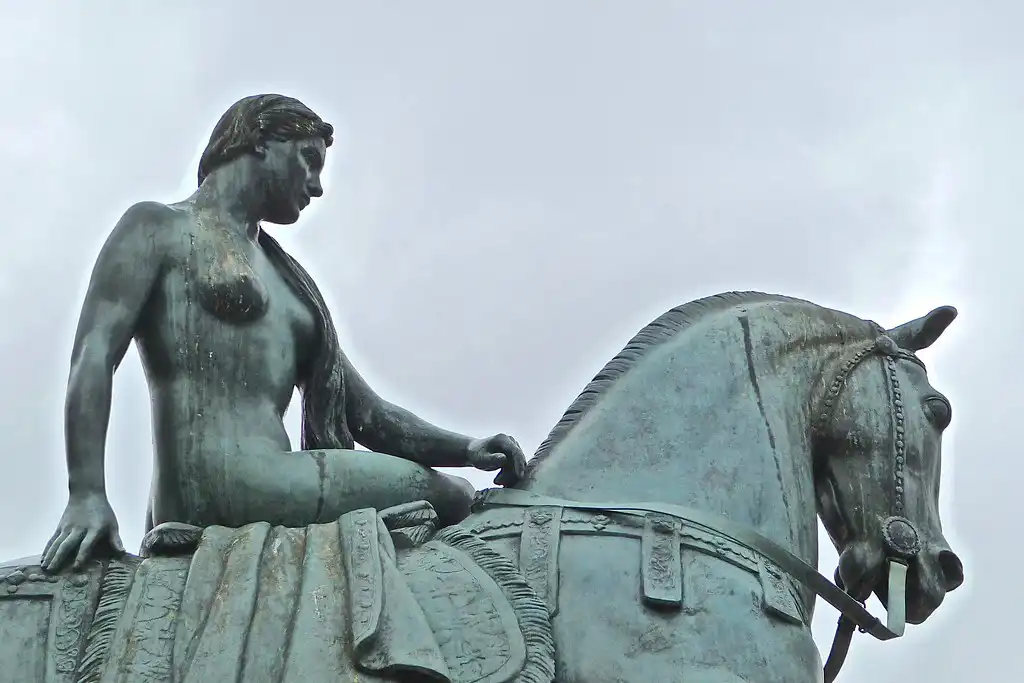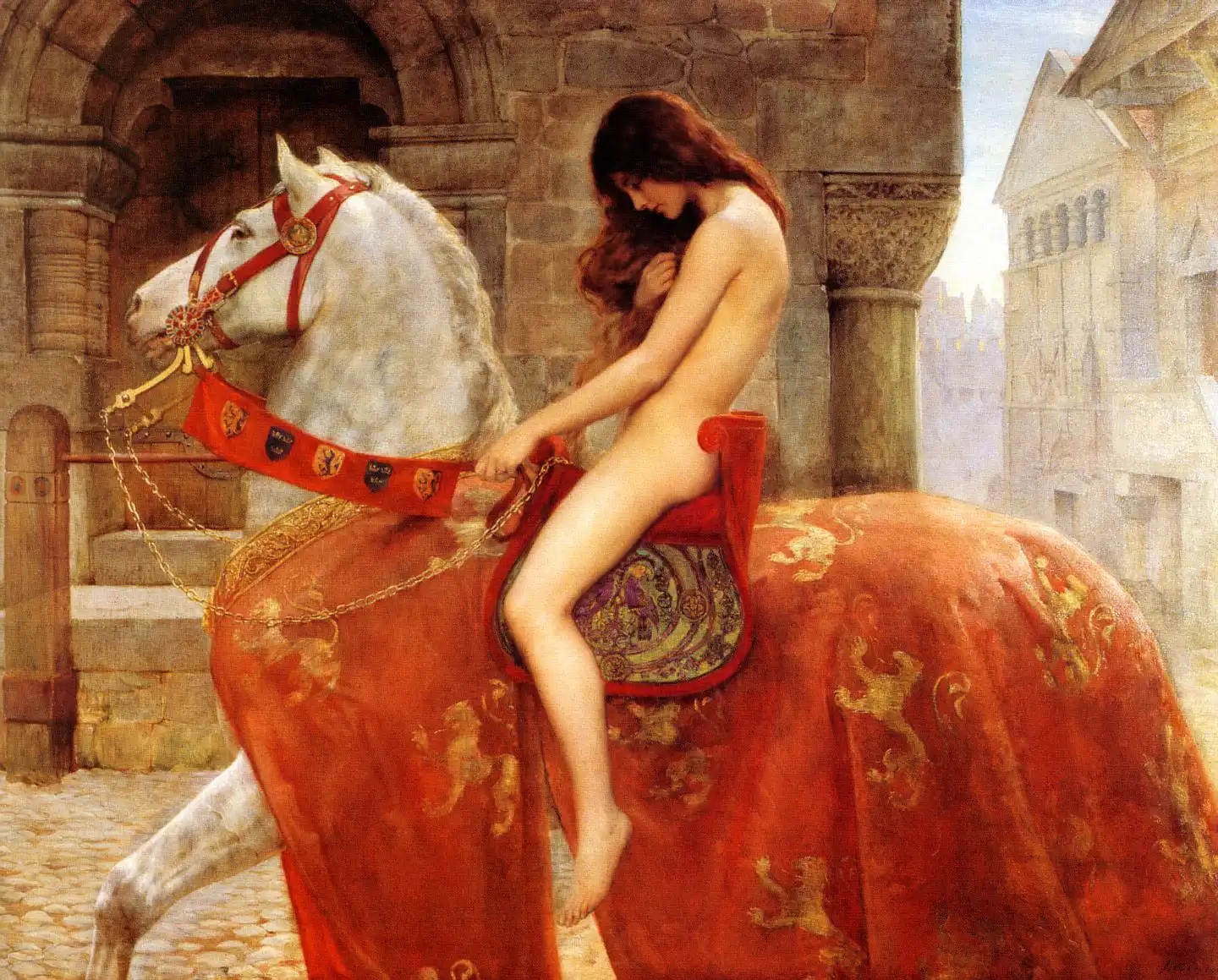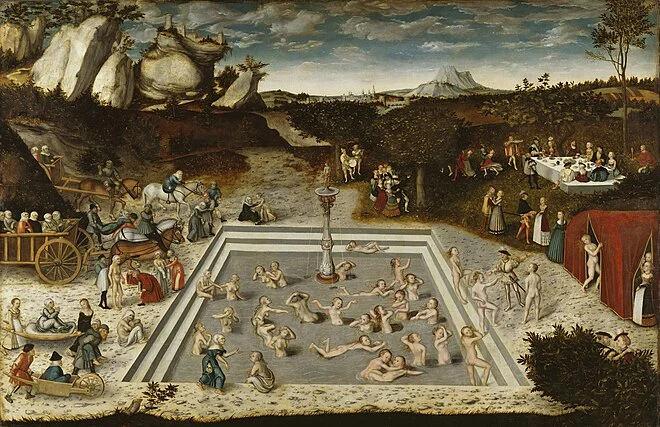The story of Lady Godiva’s ride, naked, through the streets of Coventry has changed and grown over the 900 years or so of its existence – but who was the real person behind the legend?
A long haired beauty riding naked through the streets of Coventry to help the poor, it’s a cracking story, isn’t it? But then it would have to be to survive for nine hundred years. How much truth there is in the detail we cite today is questioned, of course, because it’s not backed by any documented evidence. However, Lady Godiva lived in turbulent times. She saw nine kings of England sit on the throne. So it’d be no surprise if chroniclers’ eyes were focused elsewhere.
But does such a legendary story need to be true to capture our imagination? A renegade with a band of merry men robbing from the rich to give to the poor, is one thing. But it’s quite another for a virtuous lady to overcome her modesty to ease the suffering of the needy. That sort of story has staying power.
Lady Godiva’s legendary ride…
The chronicler, Roger of Wendover, is the only one to write about the event, and that was some years later. According to his writings, though, Godiva pleaded with her husband, Leofric, to relieve the heavy tax burden he had imposed on the people of Coventry. She must have been a woman of some persistence for Leofric eventually agreed to accede to her request… but only if she rode naked through the town. That’s as far as Wendover’s writings take the story, but it’s hard to believe – bearing in mind the dogged longevity of the story – that something didn’t happen. And so the legend now goes that Godiva ordered the people of Coventry to stay inside. She let down her long hair, mounted her horse, and did what Leofric bid. It was only a few hundred years later that a further embellishment was made to the story, whereby a peeping Tom took a peek and was struck blind.
If this infamous ride did take place, did Leofric then acquiesce to her demands? Actually, it’s believed he did. And there is some documentary evidence to this effect. Ranulf Higden’s Polychronicon states that Leofric lifted all tolls except those on horses. And further to that, during the reign of Edward I, a documented inquiry shows that at that time no tolls were paid in Coventry except on horses.

Who was she?
Interestingly, Anglo-Saxon law allowed women to own land, and Godiva was a wealthy woman in her own right. Coventry was actually one of her estates, so although Leofric was Lord of Coventry, Godiva held some sway. But is that all we know? No…
Contemporary records present a picture of a benevolent being whose reputation, though founded on an unverifiable story, was warranted. Together, with her husband, Godiva founded a Benedictine Priory and later the Cathedral of St Mary. And her pious nature saw her donate a significant amount of her physical wealth to the monastery, in honour of the Virgin Mary, to the extent that she is believed to have had all her gold and silver melted down and made into crosses to grace the place.
She also made donations to the monastery at Stow in Lincolnshire, as well as many other religious institutions across the country.
But there’s more to her than just generosity. Significantly, Godiva is the first lady to be mentioned in the Domesday Book, and she was the only woman to still own land after the Norman Conquest. Plus, if one considers her progeny, though her son never made a name for himself, her granddaughter, Ealdgyth, married Harold Godwinson, and thus became the last queen of Anglo-Saxon England. And if nothing else, that marriage is an indication of the strength of the House of Mercia (built, in no small part, by Godiva), for Ealdgyth was first married to Harold’s enemy, King Gruffudd ap Llywelyn.
Godiva, a legend that lives on
So, considering the amount of political clout Godiva clearly had, and combining that with the public nature of her pious character, the story of her ride around Coventry gains credence. It’s hard to believe that something so unlikely could have just been made up.
But she will probably always remain mostly a woman of mystery. Although her husband was buried with great aplomb in one of the porches of the Abbey, Lady Godiva’s resting place is not specifically known. It’s believed that she was buried with him, approximately ten years later. But as seems to be Lady Godiva’s way, there’s no hard evidence this is the case.




